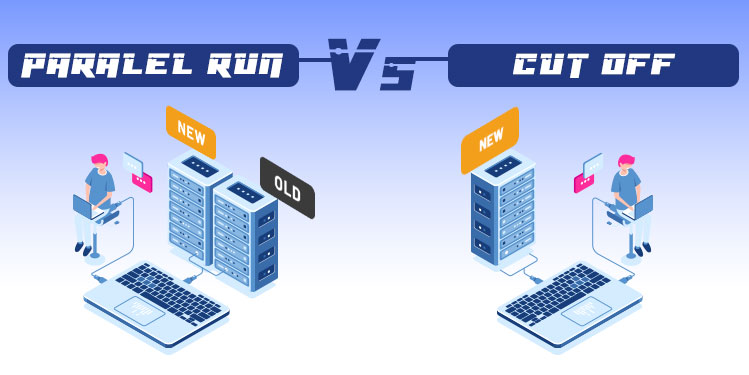One of the strategic decisions that we feel is important and is one of the key determinants in the implementation of the ERP system is to decide whether when the new system starts running (go live), the old system will still be used? Or is the old system out of use?
For example, after the project has been running for 6 months, the new system is scheduled to be use in January 1, 2021. Then, is the old system will still be used ? Or wil it be stopped immediately ?
In terms of users, generally they immediately decide or at least think that when the new system Go Live, at least it will be parallel with the old system for a certain time, for example 3 months.
The classic and relevant reason is, in order to be safe so that in the event of a new system problems, the company’s operations will not be disrupted because there the old system is still there as a backup.
Hmmm …. Sound Perfect. Yes, it was decided to go parallel.
That’s why we often hear about Never Ending Project.
This never ending project, according to our observations, is partly due to the parallel run during the go live of the new and old systems with no time limit.
So even after going live, the user is still doing input into the old system, and it is not clear when the end time of it and what are the parameters.
Why do users rarely choose the Cut Off option? The reason is because the user feels at the time of changing the system, if the old system is immediately “shut down” then if there is “something” happen to the new system, the company’s operations can be disrupted.
For example, a company cannot deliver goods, collecting goods or payment, and so on which results in losses.
Based on experience, we tried to make a comparison summary list between Parallel Run vs Cut Off:
PARALEL RUN
Pro:
- Safe in terms for business. If something happens there is still an old system so that the business will not be disrupted.
Cons:
- It is tiring for the user, because during a new system live, the user has to input the data twice, into the old and new systems. Then compare the reports from the two systems to test whether the new system is the same as the old system. This is what sometimes makes the “never ending project”, because the inputted data is never overtaken into the two systems. Then the examination of the two reports was never completed due to the busy operation.
- Perceptions and user responses during the project. When the ERP implementation project enters the testing phase, users are asked to do testing seriously. This has been a very challenging moment. Even if users do the testing, usually unconsciously, they will not exert 100% of their energy. Why? Because they consider it “safe” … “Relax, the old system will still running when we go-live”.
We all know, where does this point lead to? If the user is not 100% serious, what do we expect when the system goes live? Then the user will enter the transaction 2 times, on the old and new systems. Well, this is where new users actually do the testing. The next story you all already know. - Data transfer from the old system to the new system, especially the initial balance such as initial stock, balance of accounts payable, is usually not taken seriously because it considers that the old system is still available.
CUT OFF
Pro:
- When the new system go live, user only input 1 time, which is on the new system. The old system will be shut down immediately when the new system is running.
- When the ERP implementation project is running, the user will take the testing stage more seriously because during testing this is the opportunity to do a complete trial. When you go live, everything must be available properly to
- The data transfer is clear, because at the specified Cut Off date, the balance from the old system must be transferred to the new system. Starting from stock, accounts payable, accounts receivable and assets.
Cons:
- If something happens to a new system, it can have fatal consequences, hinder operations or even stop altogether.
Judging from the advantages and disadvantages of the new IT system Go Live Strategy, of course both have risks.
Everything is left to the Project Management who deals with user conditions, business process complexity, and data complexity.
We ourselves have decided to choose Cut Off Strategy in all SAP Business One implementation projects in which we are involved. Of course, with more optimal results.
How about you ?
7 other key points that influence the success of ERP system implementation:


